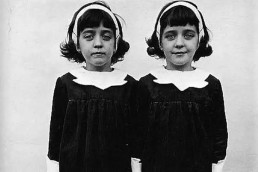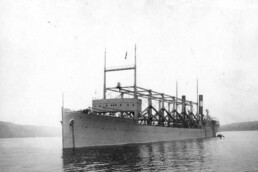In late January 1959, a group of ten experienced hikers, all students and graduates of Ural Polytechnic Institute, set out on an ambitious journey through the northern Ural Mountains of Soviet Russia. Their goal was to reach Otorten Mountain, a route categorized as “Category III”, the most difficult.
The group was led by Igor Dyatlov, a 23-year-old engineering student. Before long, the trek took a tragic turn. One member of the group, Yuri Yudin, fell ill and was forced to turn back. This decision saved his life, as he became the sole survivor of what would later be known as the Dyatlov Pass incident.
On February 1st, 1959, the group pitched their tent on the eastern slope of Kholat Syakhl, an area whose name means “Dead Mountain” in the local Mansi language. Why they chose to camp there, exposed to the harsh winds, remains unclear. Some speculate they intended to practice camping on a difficult slope, while others believe they lost daylight and decided to stop rather than descend to a more sheltered location.
Dyatlov had promised to send a telegram upon the group’s return, but when no message arrived, concerned relatives alerted authorities. On February 20th, a search party was dispatched, consisting of students, local volunteers, and military personnel.
A week later, searchers discovered the hikers’ abandoned tent, partially buried in snow. It had been inexplicably slashed open from the inside. The group’s belongings, including warm clothing and footwear, were left behind, indicating they fled in a state of panic.
Following the trail of footprints leading away from the tent, searchers found the first two bodies near the edge of a forest, approximately 1.5 kilometers downhill from the campsite. The two men, clad only in underwear and socks, had apparently succumbed to hypothermia. Nearby, a makeshift fire and broken branches suggested a desperate attempt to stay warm.
As the search continued, three more bodies, including that of Dyatlov himself, were discovered scattered between the tent and the forest. Their positions suggested they had been trying to return to the tent but froze to death in the snow.
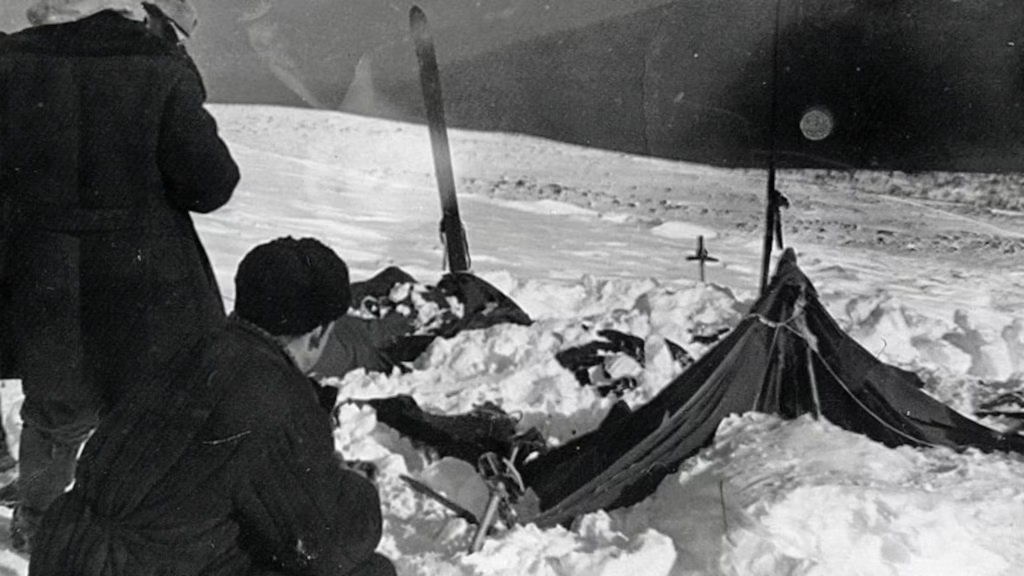
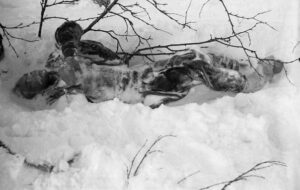
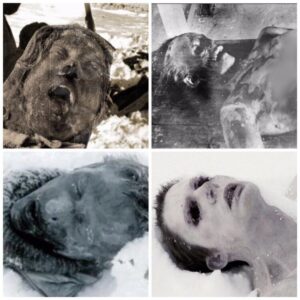
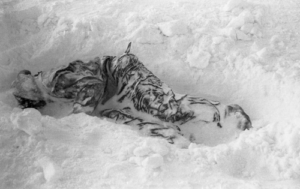
It wasn’t until two months later, in May, that the remaining four hikers were found in a ravine further into the woods, under four meters of snow. Unlike the earlier victims, these bodies exhibited unusual injuries:
-Ludmila Dubinina and Semyon Zolotaryov had severe chest fractures, while another hiker had significant skull trauma.
-The injuries were described by forensic experts as being caused by a force “beyond what a human could generate,” akin to the impact from a high-speed car accident.
-Dubinina’s body was missing her tongue, eyes, and part of her lips, adding a gruesome and mysterious element to the case.
-Some of their clothing was found to have traces of radiation, further fueling theories of military involvement.
Theories and Speculations
The baffling nature of the incident led to numerous theories over the decades, including:
- Avalanche Theory – The most widely accepted official explanation is that a small “slab avalanche” triggered by shifting snow forced the hikers to evacuate the tent in panic. However, skeptics argue that the slope’s angle was too shallow for an avalanche, and the tent showed no typical signs of being crushed by heavy snow.
- Infrasound Theory – Some researchers believe that strong winds could have produced a phenomenon known as the “Kármán vortex street,” which generates low-frequency sound waves. These infrasound waves may have caused intense feelings of fear and disorientation, leading the hikers to flee irrationally.
- Military Testing – Another popular theory posits that the hikers stumbled into a secret Soviet military testing zone. Reports of glowing orange spheres in the sky seen by other witnesses during the same period add weight to this theory. Some suggest they may have been exposed to radiological weapons or experimental aircraft.
- Paranormal Theories – Tales of extraterrestrial interference or even a Yeti attack have circulated over the years, though these remain on the fringe of plausibility.
In 2019, Russian officials reopened the case, citing public interest. Their final report concluded that a “combination of an avalanche and poor visibility” likely caused the group’s deaths.
Still, many questions remain unanswered. Why did some members sustain extreme internal injuries without external wounds?
Why were radiation traces present? And what could explain the apparent removal of Dubinina’s tongue and eyes?

